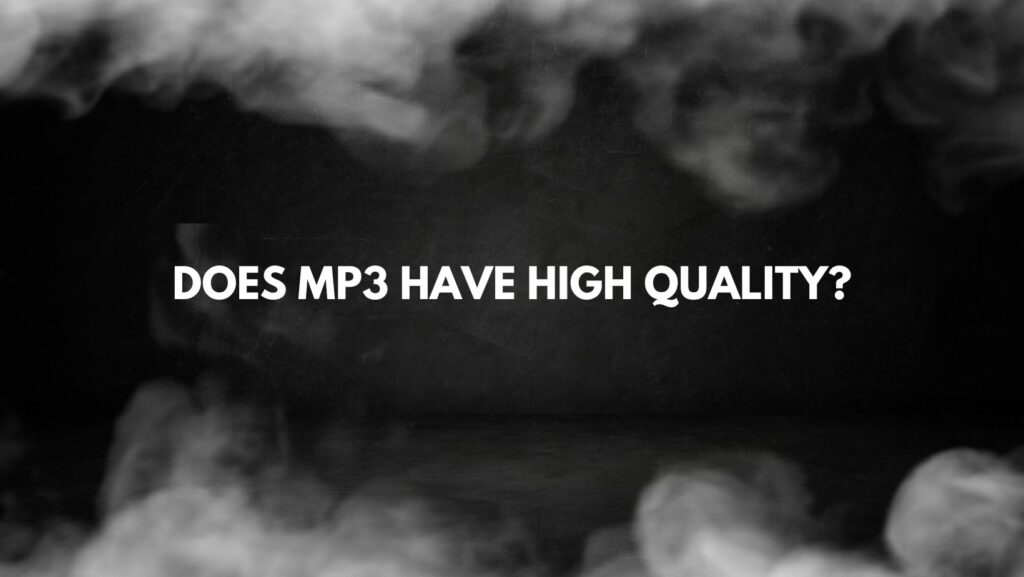In the landscape of digital audio, the MP3 format has played a pivotal role in revolutionizing the way we consume and share music. However, a perennial question lingers among audiophiles and music enthusiasts: Does MP3 have high quality? In this article, we embark on a journey to understand the intricacies of MP3 audio compression, exploring its strengths, limitations, and the ongoing quest for high-quality digital sound.
MP3: The Pioneer of Digital Compression
Lossy Compression: MP3, short for MPEG-1 Audio Layer III, employs a lossy compression algorithm to reduce the file size of audio recordings. This compression involves discarding certain audio data that is considered less perceptible to the human ear, allowing for significant file size reduction while aiming to preserve the essential components of the music.
Bit Rate and Quality Tradeoff: The quality of an MP3 file is often determined by its bit rate—the amount of data processed per second. Higher bit rates generally result in better audio quality, but they also lead to larger file sizes. The challenge lies in finding an optimal balance between file size and perceived audio quality.
Perceptual Coding: The Art of Selective Data Removal
MP3 compression operates on the principles of perceptual coding, a technique that exploits the human auditory system’s limitations. By removing frequencies and details less likely to be noticed by the listener, perceptual coding aims to preserve the overall sound quality while achieving significant compression ratios.
Factors Influencing MP3 Quality:
- Bit Rate: The bit rate of an MP3 file directly impacts its quality. Higher bit rates, such as 320 kbps (kilobits per second), generally result in better fidelity, closer to the original recording. However, the tradeoff is larger file sizes.
- Source Material: The quality of the original recording significantly influences the outcome of MP3 compression. A well-mastered source will yield better results in MP3 format compared to a poorly mastered recording.
- Encoding Software: The choice of encoding software plays a crucial role in MP3 quality. Different encoders may employ slightly different algorithms, affecting the outcome. Popular encoders include LAME, Fraunhofer, and BladeEnc.
MP3 Strengths:
- Portability and Accessibility: One of the key strengths of MP3 is its portability. The format allows for easy storage and playback on a variety of devices, from smartphones and portable media players to computers and car stereos.
- Bandwidth Efficiency: MP3’s efficient compression makes it ideal for streaming and downloading music over the internet. The reduced file sizes enable quicker downloads and lower data consumption during streaming.
Limitations and Challenges:
- Loss of Audio Information: The lossy compression inherent in MP3 results in the removal of audio information, leading to a perceptible loss of quality, especially at lower bit rates.
- Artifacting and Distortion: Compression artifacts, such as pre-echo, ringing, and other distortions, can occur in heavily compressed MP3 files. These artifacts may manifest as unwanted sounds or anomalies in the audio.
The Quest for High-Quality Digital Audio:
As technology advances, the quest for high-quality digital audio continues. Audiophiles and music enthusiasts explore alternative formats, such as lossless compression (e.g., FLAC and ALAC), which preserve the full audio spectrum without the lossy compromises inherent in MP3.
Conclusion: Balancing Convenience and Quality
The question of whether MP3 has high quality hinges on the listener’s priorities and the intended use of the audio. For casual listeners on the go, the convenience and portability of MP3 often outweigh the subtle nuances sacrificed in the compression process. However, for those seeking an uncompromised listening experience and archival quality, lossless formats may be the preferred choice.
In the dynamic landscape of digital audio, the choice between convenience and quality is a personal one. MP3 has undoubtedly shaped the modern music landscape, offering a compromise that balances file size and perceived audio quality. As technology evolves, listeners continue to explore new formats and innovations, driven by the enduring pursuit of the highest possible fidelity in the digital realm.


